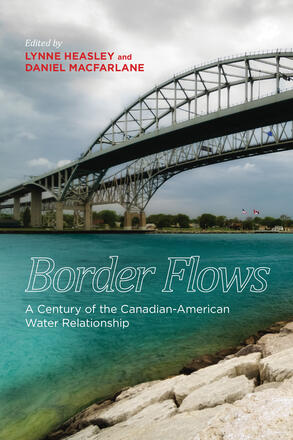
Description
Declining access to fresh water is one of the twenty-first century’s most pressing environmental and human rights challenges, yet the struggle for water is not a new cause. The 8,800-kilometer border dividing Canada and the United States contains more than 20 percent of the world’s total freshwater resources, and Border Flows traces the century-long effort by Canada and the United States to manage and care for their ecologically and economically shared rivers and lakes. Ranging across the continent, from the Great Lakes to the Northwest Passage to the Salish Sea, the histories in Border Flows offer critical insights into the historical struggle to care for these vital waters. From multiple perspectives, the book reveals alternative paradigms in water history, law, and policy at scales from the local to the transnational. Students, concerned citizens, and policymakers alike will benefit from the lessons to be found along this critical international border.
Reviews
This collection of thoughtful essays by an impressive group of expert contributors examines separation and inter-action along the aquatic borders, boundaries, and borderlands shared by Canada and the United States.
How distinct jurisdictions as neighbours at various political levels have and will continue to face common challenges makes this volume a valuable record of aquatic environmental history and a source of insights into the future of water, aptly described by the editors as “a fundamental environmental and moral concern of the twenty-first century.”
-Jamie Benidickson, Faculty of Law and Centre for Environmental Law and Global Sustainability, University of Ottawa
Reading this book was like taking a boundary waters canoe trip with experienced guides narrating the landscape and humanity’s place in it. They taught me about lakes, fish, and flora; law, politics, and prejudice; photographs, fish-buying, and ice-sailing. In the evening after dinner, around the campfire, these boundary waters guides spoke from their hearts about their love of nature and longing for a just world in the final section of the book entitled “Finding Our Place.” It was inspiring and enjoyable. I heartily recommend the journey.
-Paul Hirt, Professor of History and Sustainability, Arizona State University
These impressive essays penetrate many dualisms-abundance and scarcity, Canada and the U.S., local and regional, science and humanities, and geography and history to name a few. The accomplished authors provide both rich details and expansive views of the transborder territory and illuminate both the shared and dissimilar interests of the two principal political entities, while exposing the mutual concerns that float atop the border-defying and fluid topic of water. Riding the rapids of a tumultuous subject, the contributors make sense of the highly contentious and complex issues for academic and lay readers alike.
-Craig E. Colten, Carl O. Sauer Professor, Department of Geography & Anthropology, Louisiana State University